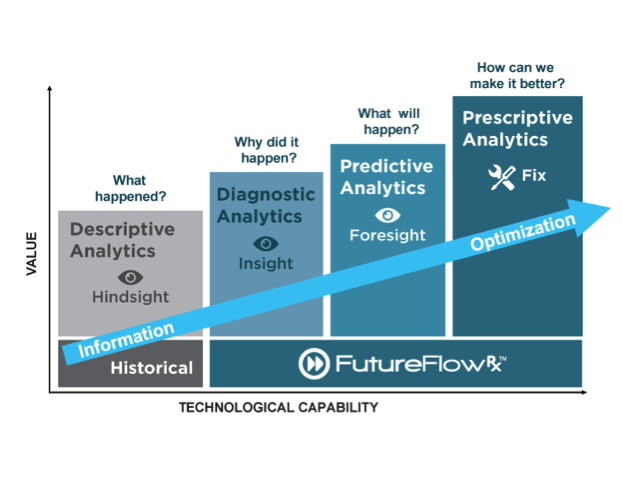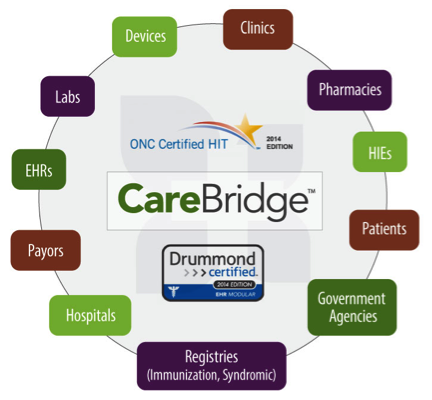As the President of one of the top healthcare marketing agencies, I’m continually fascinated at the wide array of technologies emerging in the space. Every week we get lead calls from companies with new products or services addressing pressing healthcare technology issues.
Here are some of the trends we hear lots of buzz around in 2016.
Prescriptive Analytics
Health systems are getting more sophisticated at understanding their current state using descriptive analytics of their data, however, knowing what’s going right or wrong is only a small step in fixing the issues. Now companies offer predictive and even prescriptive analytics to forecast the future and to offer corrective suggestions.
One example is FutureFlow Rx by ProModel, which not only predicts patient flow across a health system, but also gives corrective actions and likely outcomes for each.

The move from descriptive to prescriptive analytics. Courtesy: ProModel Corporation
Data Migration Tools
Whether it’s moving DICOM images from one system to another or migrating from one EHR system to another, tools to transfer data are here to stay.
Interconnectivity
Connecting records and information systems is still in its infancy. We’re seeing more and more demand for tools that provide interfaces, such as eMedApps’ Care Connectivity Platform™, which maintains continuity and uptime while establishing bridges.

eMedApps’ CareBridge Interconnectivity Platform
Niche Practice Systems by Specialty
Epic, Allscripts, and the other big EHR dogs have trouble breaking into specialty areas such as dermatology, ENT and more notably behavioral health. Smaller companies, such as Logik Solutions, which sells billing software for behavioral health, are growing by selling into practices in specialty areas.
Consolidation in Imaging IT
IBM bought Merge; Fuji acquired TeraMedica; and Hitachi left the VNA business. PACS is a tough replacement sale and vendor neutral archives are often seen as a “nice to have” versus a “must have”. Expect to see more shakeout and consolidation in this area.
More Data Integration Between Payers, Providers and Pharmaceutical Companies
Clinicians need a better way to understand which drugs are covered under specific payer plans, at what levels, and if policies and restrictions are attached to a drug. Payers need to keep costs under control. Pharmaceutical companies want to promote their drugs as quickly and efficiently as possible. Expect to see systems such as MMIT’s Mobile Search Formulary App that offer an accurate display of drug coverage to all parties by validating data from multiple payer and pharma sources.
No doubt these are exciting times for health IT. Stay tuned for our next post on this topic after HIMSS 2017.
Like this post? Get more juicy healthcare marketing content by signing up for our monthly e-newsletter.


